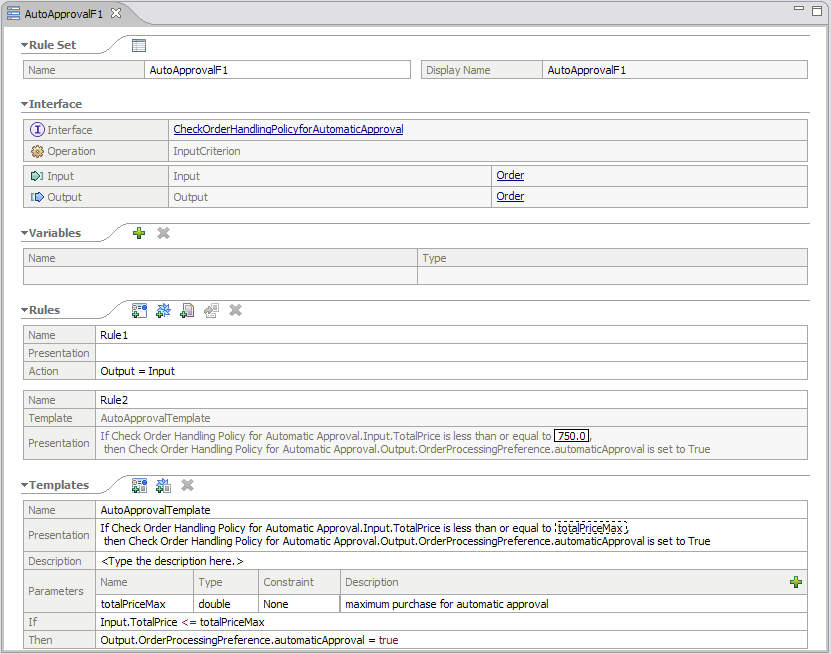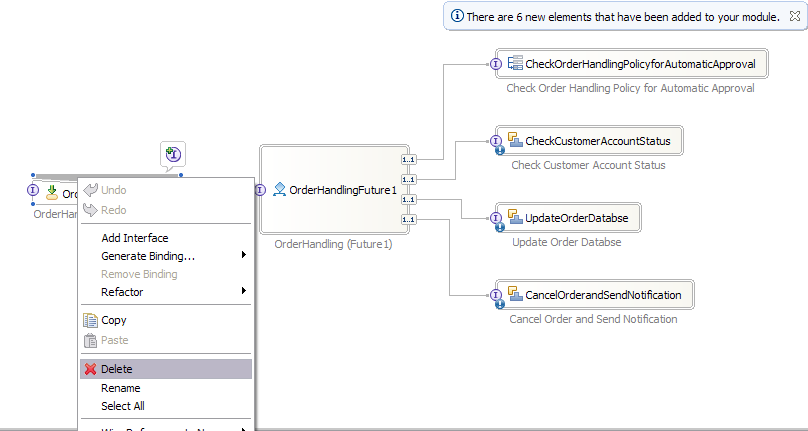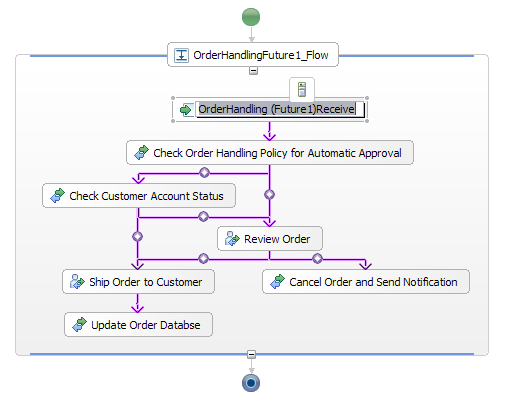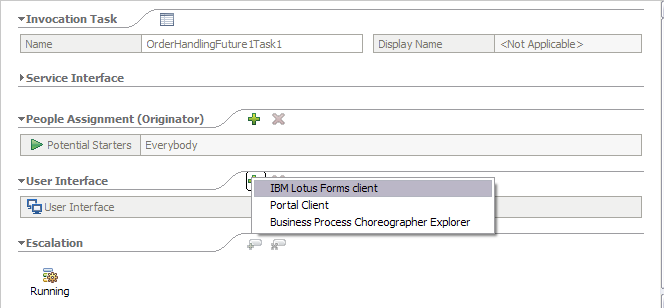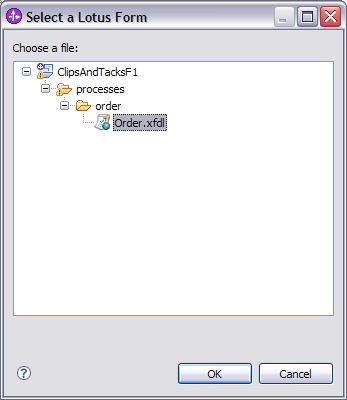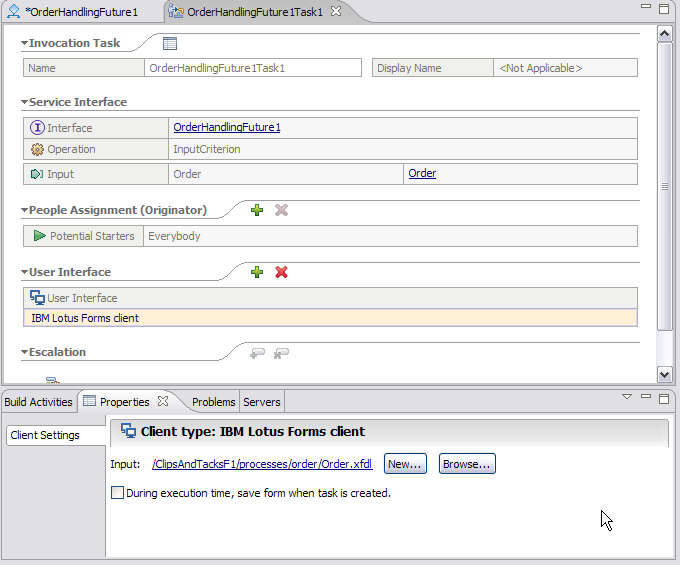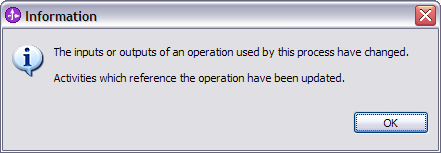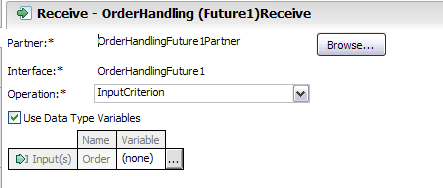The artifacts from WebSphere® Business Modeler must be converted into an artifact that you can deploy to the server by using WebSphere Integration Developer.
To define business rules, complete the following steps:
- In the project tree, expand ClipsAndTacksF1 and select .
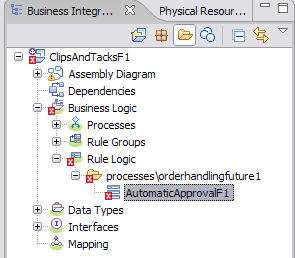
- Double-click AutomaticApprovalF1. The business rule set editor opens.
- Click the Add Action Rule icon
 under Rules.
under Rules. 
- To copy the input variable to the output variable, click Action and
select Output:Order. Then select = and
then Input:Order.
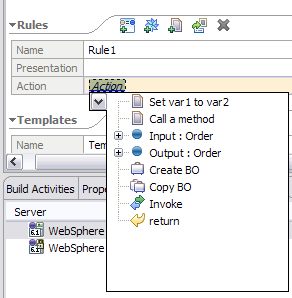
- Add a second rule by clicking the Add Template rule icon
 and select AutoApprovalTemplate.
and select AutoApprovalTemplate. 
- Click Enter value and type 750.00.

- Save your work.
All errors have been resolved. The following image shows the completed rule logic.
